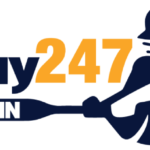Eight Tips to Improve Your Website Load Time and Performance for Better UX
Many factors contribute to a good user experience (UX), but website load time and performance are crucial. A recent study by Google and Deloitte reveals that a 0.1s improvement in website load time can increase conversion rates by 8.4% for retail sites and 10.1% for travel sites. However, businesses across all other industries have noticed considerable conversion rate changes by optimizing their website’s load time performance. So, if you want to provide a better experience to your customers, you must work on your website’s loading and performance.
How do you improve the load time and performance of your website?
While creating a website, developers investigate every parameter that can improve its performance. Developing a website involves a lot of complex coding, regardless of how big or small your business is. So, to provide a better user experience to online visitors, your website must pass through a rigorous web-app performance testing process.
But do you know what you need to test in your website to enhance its performance?
Things to look out for while performing website speed & performance test
Now that you know why quality assurance testing is the key to improve your website’s loading website’sperformance, here are a few suggestions to help in this regard.
Using a better hosting service
Your website’s performawebsite’sly depends on the kind of hosting service provider you have selected. In general, there are three types of hosting:
Shared Hosting
Virtual Private Servers (VPS) hosting
Dedicated server
The most popular among the three is shared hosting. It is cheaper and provides easy and fast migration. However, it can slow down your website’s loading time because everything, including the CPU, RAM, and disk space, is shared with other sites hosted on the same server.
Both VPS and dedicated server hosting have comparatively faster loading speeds. So, it’s advisable to it’sor VPS only if your website traffic spikes only occasionally. Dedicated server hosting is mainly preferred by websites that receive heavy traffic all year round.
Therefore, while testing, analyze your website traffic and check if you are hosted on the correct server.
Enabling Content Delivery Network (CDN)
A single server hosting your website can reduce its loading time and performance. Therefore, most businesses prefer CDN, which uses a network of servers to distribute the content delivery load. CDN uses a set of geographically distributed web servers to provide users with website content concerning their location. So, check your website server and enable your CDN if you have not already done so.
Minimizing JavaScript, CSS and HTML files
When a visitor navigates to different links on your website, it generates multiple HTTP requests. All such requests are treated as individual requests. If your website has a large number of JavaScript and CSS, this vast number of unique HTTP requests can slow your website down. Therefore, you must minimize the CSS, JS and HTML codes, reducing file sizes. A cleaner code will result in a lean page that loads faster and provides better UX to your potential customers.
Cutting down on unnecessary plugins
Plugins are usually third-party programs that add specific features to your website. However, having too many plugins can reduce your website’s load time and performance. Sometimes, plugins become outdated or have overlapping functionalities with other plugins. Additionally, some plugins generate many database queries or need many scripts to load. So, it’s always preferit’s to do time-to-time checks on all the plugins you have installed in your CMS.
Using compressed images
A picture is worth a thousand words. It is always recommended to use only good-quality images to complement your website content. However, you need to exercise caution when choosing your images, as large-size images tend to slow down your website’s load. The only way to avoid this trap is to compress and optimize these images without compromising their quality.
Moreover, it is advisable to use PNG format images as they have fewer than 16 colors and are also considered to be better for graphics than JPEG. Many free tools are available on the web to help you compress and convert images to PNG.
Reducing page redirects
It is a known fact that additional HTTP requests slow down your website, thereby increasing waiting time for visitors. Page redirects are one such culprit that contributes to the widening of this HTTP request-response cycle. There are a few genuine reasons why redirecting a page becomes necessary, such as when moving to a new domain or redirecting backlinks’ trafficbacklinks’leted page to a new page. Remember that the fewer the redirects, the better it is for your website.
Utilization of website caching
Caching is an effective method to speed up website loading. It stores your website’s current website’snd shows it to the visitor until you update the website. Website caching ensures that every time when a visitor lands on your page, it doesn’t need to sedoesn’tHTTP requests. Whether in WordPress, any VPS, or a dedicated server, you can easily enable website caching through a plugin or by going to general settings.
Usage of web fonts
Web fonts come in handy when you want an eye-catching website design. However, web fonts, instead of system fonts, send additional HTTP requests, increasing your website loading time. The best practice here is to use only the system fonts because they are already present on most devices.
This list of suggestions is not exhaustive; there are more. However, all these points are crucial and are considered by QA professionals when testing a website’s load timwebsite’sformance. If needed, even you can do it manually. Nevertheless, consulting an experienced QA solutions provider or an industry expert with expertise in manual and automated software testing is always advisable.

















